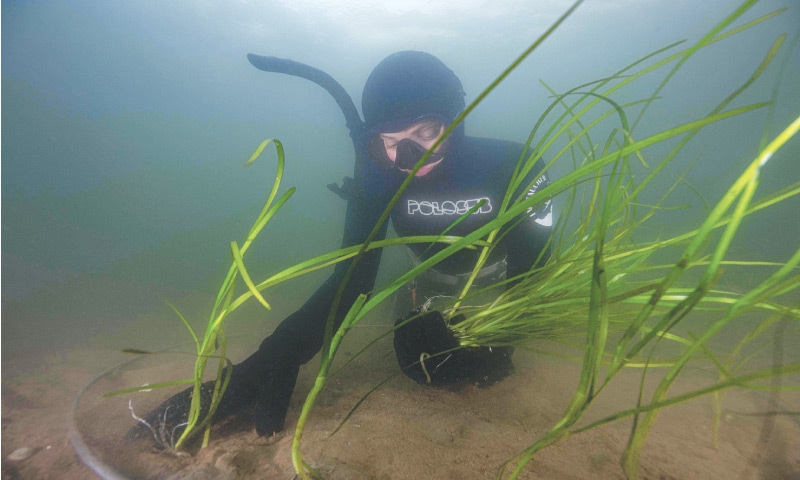Under a white tent on the shores of a polluted Danish fjord, volunteers and researchers prepare slender green eelgrass shoots for planting on the seabed to help restore the damaged ecosystem.
Although Denmark has a strong environmental track record, only five of its 109 coastal zones are considered healthy, according to the Danish Environmental Agency.
Like other coastal areas in Denmark, the Vejle fjord suffers from eutrophication, a process where nutrients from land runoff accumulate in the water, leading to excessive growth of microorganisms and algae.
The algae cover the water surface, blocking light and cutting off oxygen, which kills plants and wildlife. An underwater surveillance camera installed in the Vejle fjord by the municipality last year detected just one fish in 70 hours.
Denmark, a major pork producer, uses over 60 percent of its land for agriculture, one of the highest concentrations in the world, prompting frequent warnings about the risk of runoff.
A 2022 report by the University of Southern Denmark (USD) concluded that the 22-kilometer Vejle fjord was in “poor environmental condition” due to high levels of nitrogen runoff from farm fertilizers. Warmer temperatures exacerbate the issue.
“We had a very warm summer in 2023, resulting in severe oxygen depletion,” said Mads Fjeldsoe Christensen, a biologist working for the Vejle municipality.




